Why Did Comic Art Look Bad in the Past?
In a time when audiences were racing in droves to catch the latest talkie and hand-drawn blitheness was just finding its legs, a new medium brought kids (and adults, allow's be honest) back to reading. Comic books began equally a dime-store novelty, and since and so, they take gone through countless transformations, artistic explorations, public excises, declines and revivals.
The history of comic book styles is ane as dynamic as the stories they contain, shaped non only past the easily of countless writers and artists only by millions of readers across nearly a century. While there might not be whatever mutants or doomsday weapons in the actual history of comics, its panels are every bit as unpredictable.
The Golden Age (1938-1950)
–
The Golden Age was truly an idyllic time. There was a clear stylistic distinction between skilful and evil, and superheroes were nothing more than than happy-go-lucky exercise-gooders that battled and ever defeated villains motivated by money or globe domination. And that's exactly why the comics of this age defenseless similar wildfire. They fulfilled every kid's dream of gaining larger-than-life powers, effortlessly overcoming their bullies and leaping out of their colorless neighborhoods into take a chance.

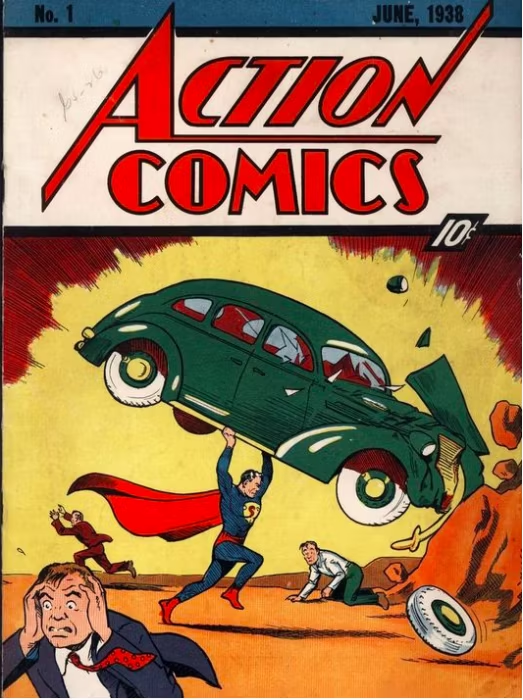
Dropping literally out of the heaven to kick off the Golden Age, Superman represents the comic book origin story. Newspaper comic strips (where the term 'comic' book comes from, incidentally) already existed along with radio shows featuring masked vigilantes like the Shadow. Only Superman was the first super-powered musclehead to don a cape and skin-tight spandex to fight criminal offense. Readers couldn't take their eyes off of him. Superman set the tone for every superhero to come later, even becoming the first to earn his own exclusive comic book dedicated to his adventures in a time when characters were typically restricted to one-shot stories in variety publications.
Fine art styles of the Gold Age of comics
- Though printed in booklet form, comics did not deviate far from their newspaper ancestors, telling a straightforward story through basic sequential images.
- Cartooning was simple as publishers were not all the same at the level of investing in or attracting serious artists.
- Panels were laid out in basic square grids, often full of more dialogue than imagery.
The Argent Age (1950-1971)
–
Not unlike the youth of its readers, the Golden Age was a time of whimsy and innocence that couldn't last forever. Fans were growing up—some of them returning habitation from a horrific World State of war—and the idea of an invincible, caped avenger casually overcoming the world's corking evils became less and less disarming. These factors led to a refuse in superhero stories and a rising in comic titles that would appeal to more adult sensibilities—the Silver Age of Comic Books.
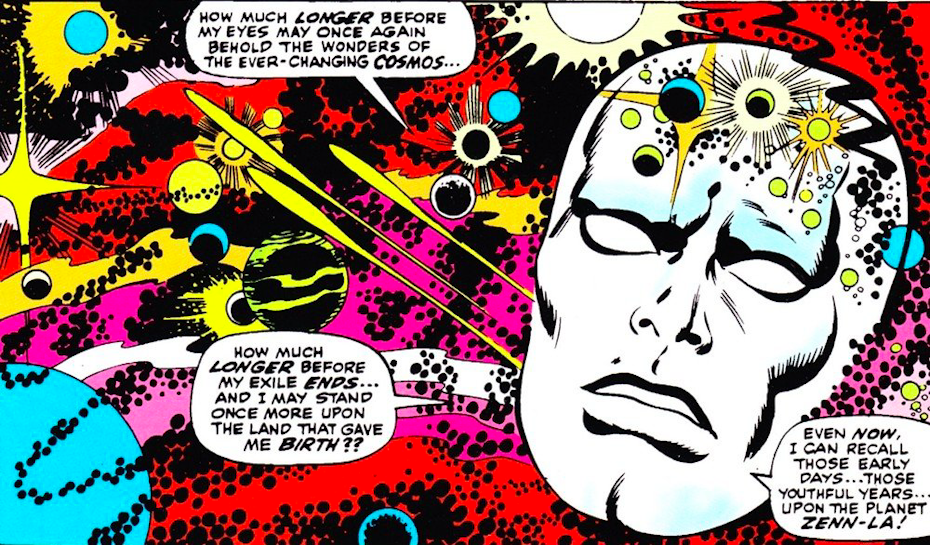

Publishers explored racier genres, and past far the nigh successful was horror. These gruesome tales unmarried-handedly rescued the manufacture from its fate as a half-remembered fad, and their influence stretched beyond comics to likes of acclaimed film director John Carpenter. The visual styles mimed these darker themes, mixing in surrealistic and sometimes disturbing imagery.
These comic books were so effectively grisly that morality groups—already raging against comics as "junk food for the young listen"—at present regarded them every bit the indisputable tools of the devil, despite the fact that majority of its readership was adults.
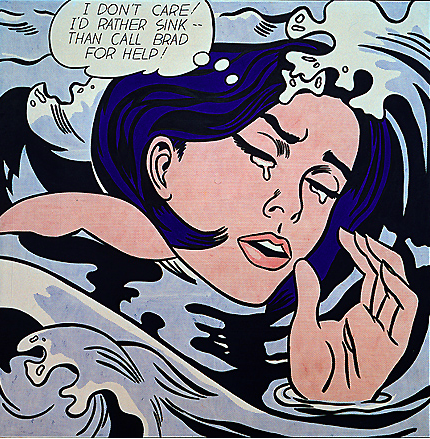
Afterwards a number Senate hearings, publishers created the Comics Code Authority (CCA), whose strict censorship forbade even the words "horror," "terror" or "crime" in any titles. The result was a growing pains era of artistic experimentation, fast and loose writing and political suppression all rolled into one.
Fine art styles of the Argent Age of comics
- Comics took their inspiration from art movements of the past, most notably surrealism, to illustrate the foreign worlds in which their heroes lived.
- With comics now established equally a lucrative medium, encompass images relied less on cheap, attending-grabbing tactics and instead became an artistic representation of the issue's themes or a protagonist's state of heed.
- Comic books constitute true creative expression for the outset time in the Pop Art motion, which appropriated commercial objects such equally product labels, magazine ads and comics for the purpose of fine art.
The Bronze Age (1971-1980)
–
As suggested by its name, the Bronze Age wasn't as lustrous as the carefree Aureate Age or the experimental Silver Age. Having exhausted merely about every dastardly scheme a supervillain could hatch, comics gave its heroes even tougher enemies to confront.
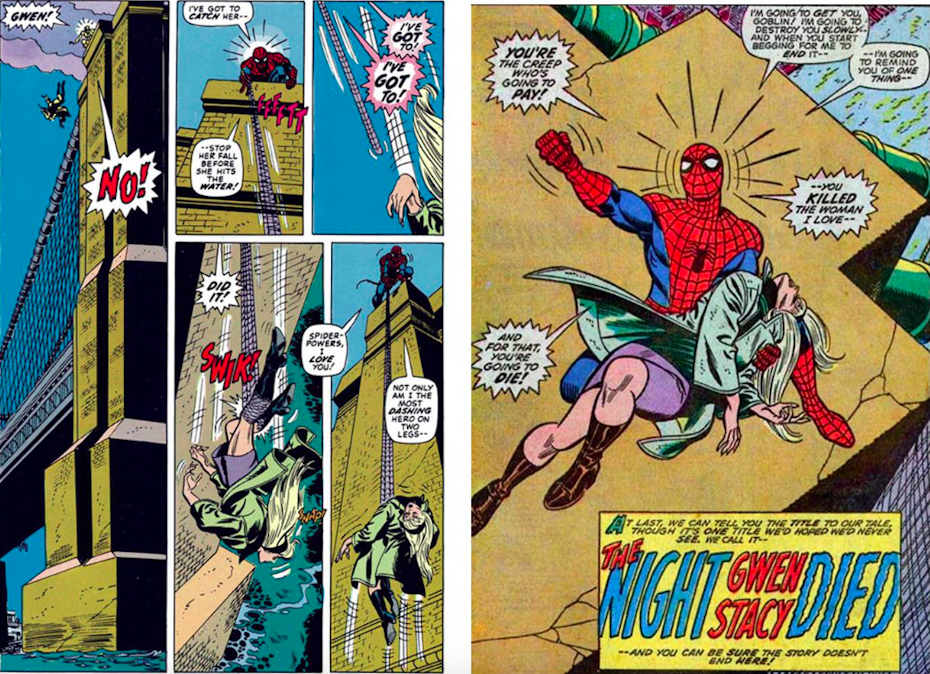
Information technology all began with a story in Spider-homo in which the hero'south best friend suffers a drug overdose. Spider-human being is helpless, and his alter ego, Peter Parker, has no choice merely to take the phase, relying solely on his gifts of persuasion and empathy to salvage the day. The CCA opposed the inclusion of drug topics, any the bulletin, but Marvel published the issue anyway with reader back up. This caused the public to lose respect for the CCA and led to the end of censorship, paving the fashion for darker stories (more on that later).

Effectually this time, author Chris Claremont revived a cancelled Silvery Age serial nigh a canaille grouping of mutants called the X-men (heard of it?). Calculation racially diverse, international characters to its cast, Claremont's 2nd wave of mutants still had godly powers, simply now they were reviled by the public for that very reason. Echoing the struggles of the Civil Rights Movement, prejudice against the X-men'due south genetic traits became the comic's most enduring theme.
While the Golden Historic period portrayed social topics like Globe State of war in typical Golden Age manner—unfailing virtue and easy justice—Bronze Age comics dealt with the gritty realities of urban life in means that had no real respond. Maybe Captain America could smack Hitler in the face, just how does a superhero attack the intangible foes of discrimination and addiction?
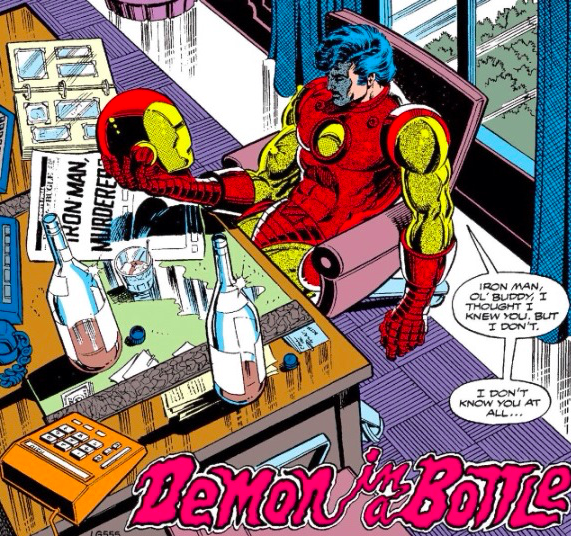
Every bit the stories became more than focused around gritty, realistic stories, the way of the imagery morphed to lucifer.
Art styles of the Bronze Age of comic books
- Comics traded in surrealism and experimentation for photorealistic depictions of the urban landscape.
- The modify-ego side of the superhero's life is given more panel time, and sensational costumes took a backseat to depictions of everyday people.
- Depth of focus and lighting gave comics a cinematic way, heightening the reader's emotional connection.
The Dark Age (1980-1993)
–
Unlike the bodily Dark Ages, this era was where comic books achieved enlightenment. Until and then, the Golden Age's uncomplicated right and wrong withal echoed (if only subtly updated to suit the times). Here, writers threw all of it out the window and showed u.s. that a comic book hero's world was just as gritty equally the enemies he faced.

Stories like "The Night Knight Returns" and "V for Vendetta" warned of an ominous futurity no amount of heroism could prevent. Writers crafted characters who were psychologically complex, often dangerously then. Alan Moore'south "The Killing Joke" introduced us to a Joker who was more than a giggling jester but a frighteningly psychotic serial killer. "Watchmen" gave the states heroes that were pushed to questionable deportment by the very nature of the globe they were trying to defend. During this age, the line between hero and villain wasn't only blurry; writers revealed that information technology never existed at all.
Merely it wasn't all dark, even when information technology was. Independent publisher Image Comics was born, and their flagship hero, Spawn, received unprecedented popularity, enough to spawn (sorry!) a film adaptation only a few years after its inception. This and several other pop titles such as "Prophet" and "The Savage Dragon" besides spawned (terminal 1, promise) more than interest in creator-owned comics as a whole.
Ironically, as the imagery in these comics was becoming darker and more stylized—playing with lighting and deep, dark, contrasting colors—the genre was thrust out of the shadows of pulp and into the calorie-free of literary awareness. The idea of a sustained comic equally a unmarried work of literature led to the publication of several graphic novels, culminating in Art Spiegelman'south "Maus," the outset comic series to win a Pulitzer Prize. Comic books were finally regarded as a legitimate art form, every bit malleable and open up to creative expression as any medium.
Art styles of the Dark Age of comics
- Night was the prominent setting for nearly all stories of this age, leading to an art style that favored strategic lighting and long shadows.
- Similarly, artists took their inspiration from difficult-boiled noir films of the 40s and 50s, creating gloomy, dubious worlds of smoke, rain, alleyways and silhouettes.
- Silverish Age horror comics influenced the Dark Age in a more than psychological sense, with disturbing portraits and unnatural angles that created a perpetual sense of unease.
The Ageless Age (1993-Present Twenty-four hours)
–
We've now reached the point in our journey across many colorful panels at which there is no definitive way to categorize the present "age." Comics have expanded into something without shape or borders—a nebulous mass of nerd wonder.
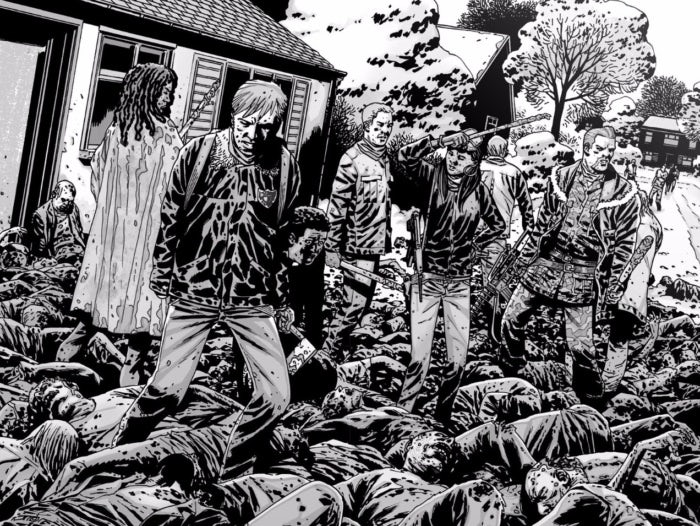

Avant-garde technology in film, goggle box and video games has created an unstoppable juggernaut of adaptations, leading to an upsurge in comic volume readers from all walks of life. Plus, the affect of Image Comics is still being felt, as readers proceed their interest in indie books fueled by the industry'southward rampant commercialization. No longer restricted to publishing giants Marvel and D.C., writers are free to explore specialty publishers and niche markets, fifty-fifty foregoing traditional distribution channels by publishing their content on the net.
One thing can be said almost our current comic volume age: it's a time when the superhero doesn't have to be heroic or dark or fifty-fifty present at all. Comic books can be as pulpy or as serious or as just plainly weird as you want them to be. Like the invincible Superman of the optimistic Golden Historic period, now is a time when anything is possible.
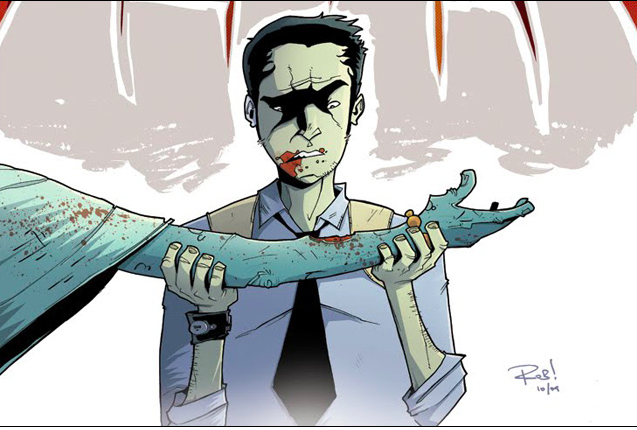
Art styles of the Ageless Age of comics
- Advanced engineering science has led to creative illustrative techniques—everything from digital painting to 3D modeling.
- The line between film and comic is now so thin that some series are adapted into motion comics, adding voice actors and animation to the panels with no change to the art itself.
- The ubiquity of publishers has led to a wide variety of art styles. Design now varies drastically, depending on the nature of the comic and the choices of the creator (rather than the uniform "in-house" styles of the by).
Got a favorite comic book style?
—
Comic books take had a long and vibrant history—far also long to represent in one modest article. The references here correspond but a handful of pivotal moments as well as some of my personal favorites. Maybe I missed yours.
Before you get-go sharpening your adamantium claws, how virtually sharing your thoughts in the comments?
millardsurpoked1982.blogspot.com
Source: https://99designs.com/blog/design-history-movements/history-of-comic-book-styles/
Belum ada Komentar untuk "Why Did Comic Art Look Bad in the Past?"
Posting Komentar